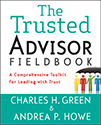This post is part of our Weekly Tips series.
This story reflects one of the key points in the Get Real manifesto: Mistakes are inevitable; how you handle them reveals your true character.
Mozilla chose to handle their mistake in a trust-building way by using a caveat to openly acknowledge the discomfort (“Well, this is embarrassing”). Other caveat examples include:
- “There’s really no easy way to say this.”
- “You’re probably not going to like what I have to say.”
- “This is awkward.”
Caveats—spoken genuinely and without a “but” or “however” to follow—are conversational jewels. They make it easier for both giver and the receiver to initiate a conversation about a difficult topic.
Bonus: Making it Real
This week, practice using caveats. How?
Think about a challenging business relationship where topics are being avoided or negative patterns aren’t being called out. What isn’t being said that needs to be said? How might you use a caveat to get the conversation going?
Learn More

- Learn about six risks you should take to build trust.
- Read about the skill of risk-taking in Chapter 9 of The Trusted Advisor Fieldbook: A Comprehensive Toolkit for Leading with Trust.
Andrea Howe
Latest posts by Andrea Howe (see all)
- Reprise: Don’t let your egocentric bias stop you from this simple relationship-building practice - June 24, 2025
- Role models for healthy candor - May 27, 2025
- A small gesture (and related risk) with big trust impact (Part II) - April 1, 2025
